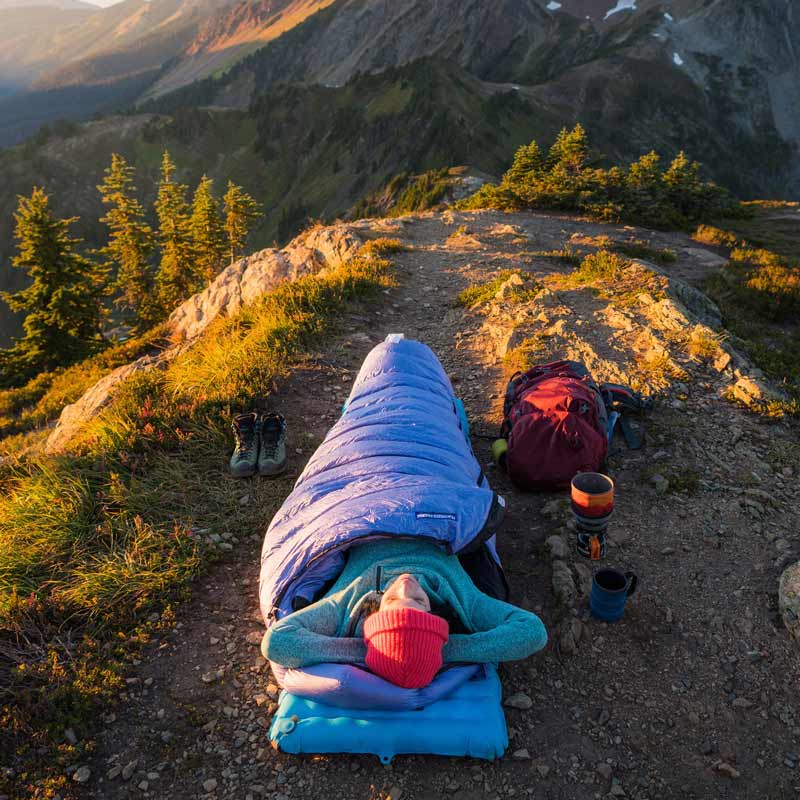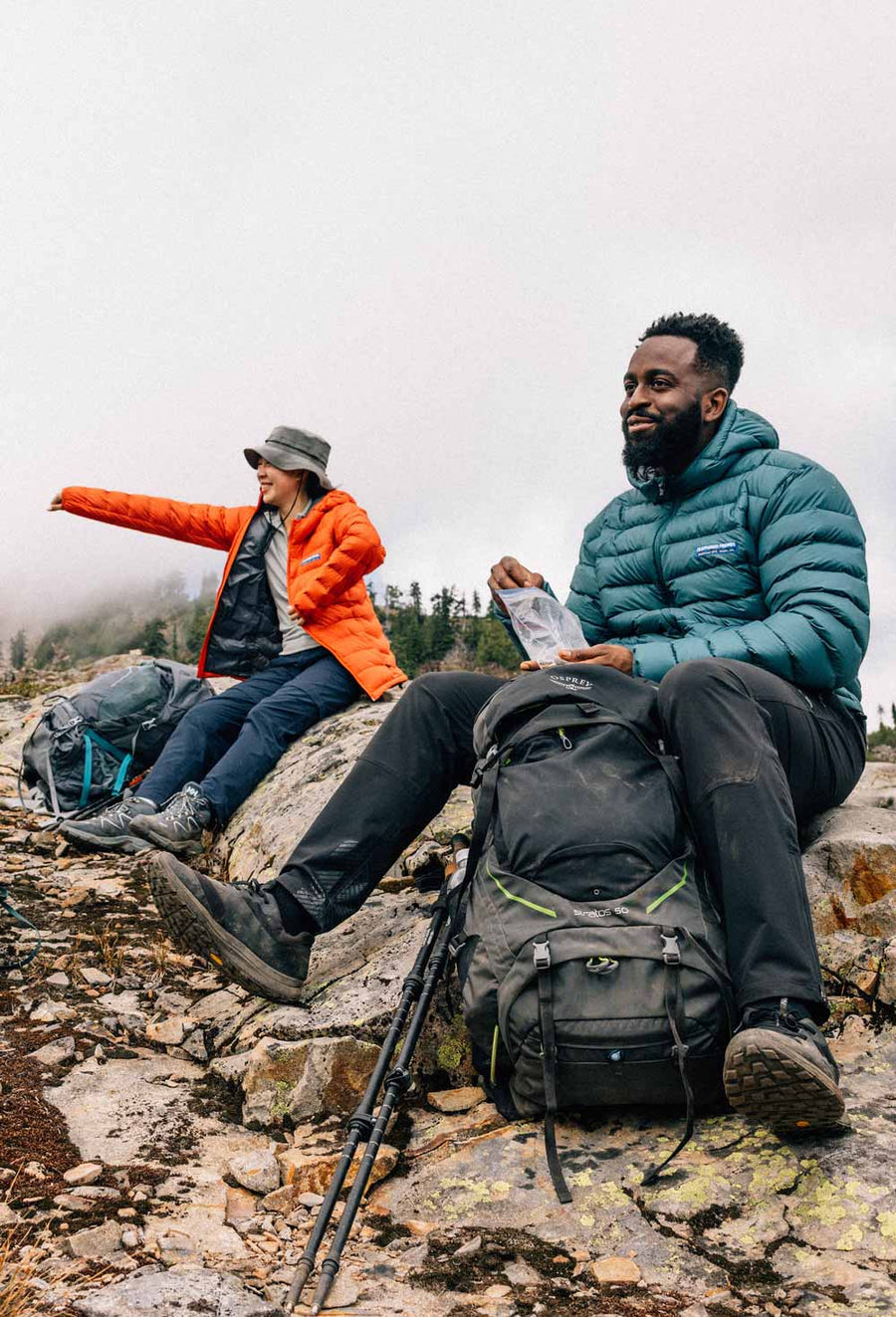Big Mountain Goals? Time to Start Training
Do you have some big mountain goals for 2017? If so, it’s already the middle of February and summer mountaineering season (in the states) will be here before you know it. Time to begin training.
Here are a few tips to think about as you start getting out there.
As always, be sure to consult with your physician before beginning any new training program. This post is not a comprehensive training program, but hopefully gives you some ideas. Don’t forget to learn and practice the necessary technical skills as well!
Words and photographs by Claire Giordano.
1. Start early, and ramp up slowly.
Climbing a mountain (such as Rainier) takes not only strength, but also excellent endurance. One of the most common routes, Disappointment Cleaver, requires you to carry a heavy pack (usually around 40 pounds if guided, more if your group is self supported) all way way to basecamp at 10,000 feet. Then, that night or the next, you drop the weight at camp and go even higher in your attempt to reach the summit. The combination of elevation and exertion for hours causes a lot of stress on the body.
This means the climb will require a strong cardiovascular system, as well as muscles and joints used to carrying weight. One of the best ways to target these two areas is to start your load-bearing hiking training early, and gradually increase the amount of weight you carry in your pack. The benefit of this measured approach is that it gives the body time to adjust, which for me helped minimize joint pain. Too often I see climbers go too hard too early in their training and injure themselves, which at best sidelines training and at worst means cancelling the climb.
For example, when preparing for a climb in August, I began training in February with a 15-20 lb pack. I wanted to be hiking with my full pack weight by July, which meant I had six months and around 25 lbs to add, so each month I increased pack weight by five to six pounds. The later your start, the bigger the weight jump you have to make each month. By July I was hiking around 8 miles each trip with a 40lb pack (and a minimum of 3,000 feet elevation gain for each hike). With this training, getting to base camp was a somewhat-pleasant hike and I felt strong on summit day. Most importantly, my usually troublesome knees felt great and I was able to enjoy the climb rather than be stuck in the pain-cave for three days.

2. Dial in your pack set-up
In order to gradually increase your weight in this way, you will need to dial in your pack setup and how you are going to add weight each month. Step on is to use the pack you are actually going to take up the mountain. This is super important, as it allows you to make sure the pack fits correctly, and gives you time to see how it carries and if any adjustments are needed. This way, there are no surprises on summit day.
Step two may seem obvious, but figure out how you are going to weigh the pack each week. I like a handheld pack scale the best.
Step three is to figure out your baseline day hiking weight; this should include pack, food for the day, ten essentials, extra clothing, and two liters of water. This should stay roughly the same each week, making it simple to add weight.
Step four; decide on how you want to add weight. I personally like using a combination of gallon water jugs and water bottles. This makes it easy to change, and allows me to dump some (but not all) the water on the way downhill. Hand weights work ok, but you are committed to carrying them for the whole day, because unlike water you can’t dump them if the hike is more than you bargained for.

3. Take your pack on an (uphill) date once a week
Once you have your pack ready, get out there! Ideally this will be on hikes outside (more on why later). If, however, you can’t make it to a trail and you live in a city like Seattle, there are no shortage of hills. Go up them. All of them. And don’t worry about how ridiculous you think you look red-faced and marching up and down the same steep street with a full pack. Every weird glance will be worth it when you are trudging up the side of a mountain and able to look around and enjoy the view.
If you are not fortunate enough to live in a place with lots of hills and easily accessible trails, the stair machine just became your best friend. So did the stairs in the tall office building, and the bleachers, and the little hillock in the park…. You get the point. Get that elevation training in however you can. Elevation gain is one the things that makes mountaineering so hard; it is a sustained hike uphill with some extra fun stuff thrown in like crevasses and snow.

4. Train outside
Whenever possible, get on an actual trail. When you climb a mountain you will be walking on a trail of some kind. It will probably start out smooth and dusty, but invariably the mountain gets steeper and the trail gets worse. Not only must we lug a pack up, but we have to carry it up, over, and around uneven terrain. Training on an actual trail is the best way to get the body used to this kind of movement and balance.
Training outside has the added benefit of being a lot more fun, which means we are more likely to do it. In Washington, as summer approaches the days get longer and the alpine snow cover melts, opening up hundreds of miles of trails to explore and train on.

5. Don’t forget about the downhill
Getting to the summit is only half the adventure; you also have to get back down. For me, the descent sometimes feels harder than the ascent; the excitement of working toward the goal has worn off, the lack of good sleep finally starts catching up to me, and my knees take a beating. With this in mind, it can be helpful to train for the downhill too.
One of the most effective ways I found to to train for the descent was to keep some of the weight in my pack after reaching the top of each training hike. I would usually ditch at least half (no more than two thirds) of the extra weight. This way, my legs continued to get a load-bearing workout on the way down. By ramping this weight up slowly, my knees and ankles had time to adjust and become stronger, so by the time I got on Rainier not much hurt until we were a mile from the parking lot (which was a huge improvement over a previous climb).
I also found it useful to do extra squats and lunges to further strengthen the quadriceps, which when strong enough can help take strain off the knees.
Stay tuned for part two, which will delve into shake-down hikes, boots, and cross training.
The post Big Mountain Goals? Time to Start Training appeared first on Expedition Tales.









Leave a comment